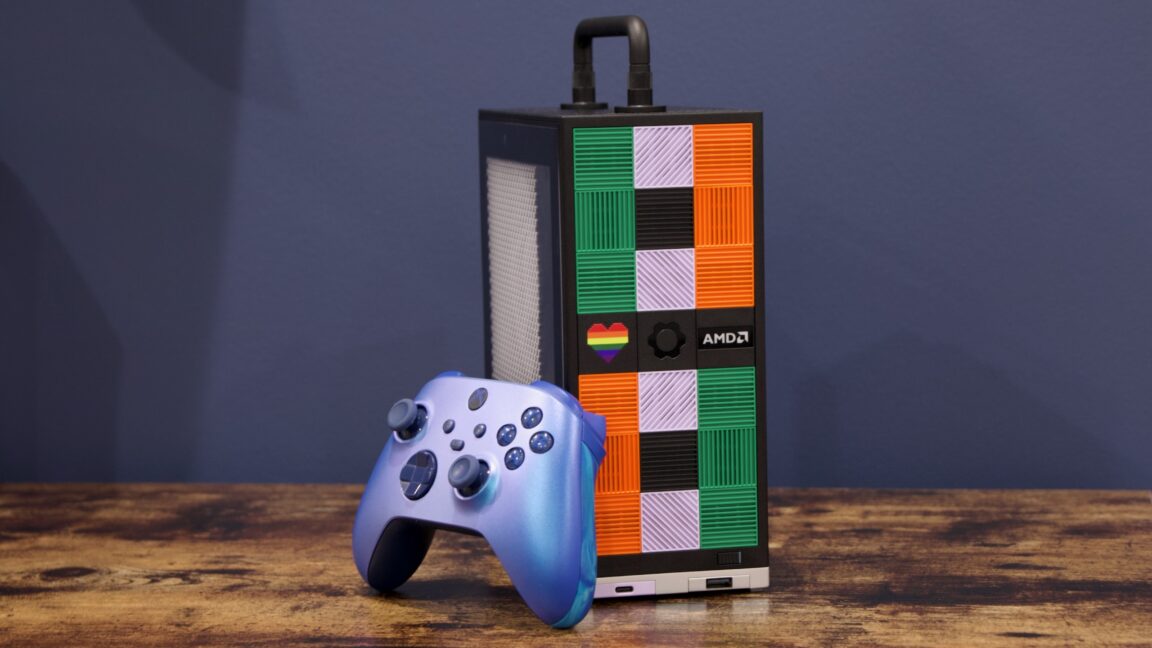Framework has also published basic templates for both the tiles and the top panel so that those with 3D printers can make their own.
PC testbed notes
We’ve compared the performance of the Framework Desktop to a bunch of other PCs to give you a sense of how it stacks up to full-size desktops. We’ve also compared it to the Ryzen 7 8700G in a Gigabyte B650I Aorus Ultra mini ITX motherboard with 32GB of DDR5-6400 to show the best performance you can expect from a similarly sized socketed desktop system.
Where possible, we’ve also included some numbers from the M4 Pro Mac mini and the M4 Max Mac Studio, two compact desktops in the same general price range as the Framework Desktop.
For our game benchmarks, the dedicated GPU results were gathered using our GPU testbed, which you can read about in our latest dedicated GPU review. The integrated GPUs were obviously tested with the CPUs they’re attached to.
| AMD AM5 | Intel LGA 1851 | Intel LGA 1700 | |
|---|---|---|---|
| CPUs | Ryzen 7000 and 9000 series | Core Ultra 200 series | 12th, 13th, and 14th-generation Core |
| Motherboard | ASRock X870E Taichi or MSI MPG X870E Carbon Wifi (provided by AMD) | MSI MEG Z890 Unify-X (provided by Intel) | Gigabyte Z790 Aorus Master X (provided by Intel) |
| RAM config | 32GB G.Skill Trident Z5 Neo (provided by AMD), running at DDR5-6000 | 32GB G.Skill Trident Z5 Neo (provided by AMD), running at DDR5-6000 | 32GB G.Skill Trident Z5 Neo (provided by AMD), running at DDR5-6000 |
Performance and power
Our Framework-provided review unit was the highest-end option; it has a 16-core Ryzen AI Max+395 processor, 40 graphics cores, and 128GB of RAM. At $1,999 before adding an SSD, a fan, an OS, front tiles, or Expansion Cards, this is the best, priciest configuration Framework offers. The $1,599 configuration uses the same chip with the same performance, but with 64GB of RAM instead.
All 16 of those CPU cores are based on the Zen 5 architecture, with none of the smaller-but-slower Zen 5c cores. But its total TDP is also limited to 120 W in total, which will hold it back a bit compared to socketed 16-core desktop CPUs like the Ryzen 9 9950X, which has a 170 W default TDP for the CPU alone.
In our testing, it seems clear that the CPU throttles when being tasked with intensive multi-core work like our Handbrake test, with temperatures that spike to around 100 degrees Celsius and hang out at around or just under that number for the duration of our test runs. The CPU package uses right around 100 W on average (this will vary based on the tests you’re running and how long you’re running them), compared to the 160 W and 194 W that the 12- and 16-core Ryzen 9 9900X and 9950X can consume at their default power levels.

